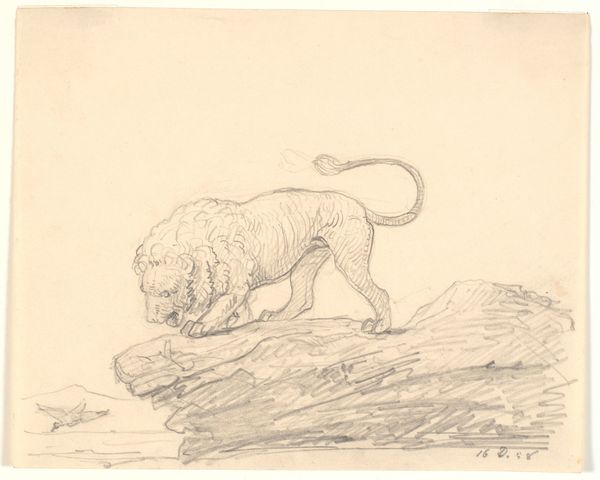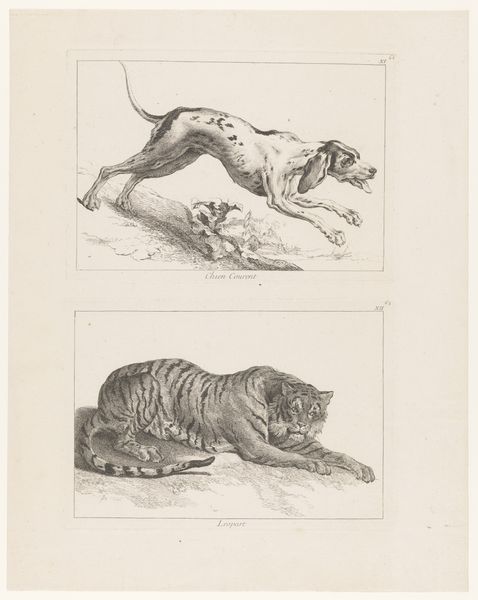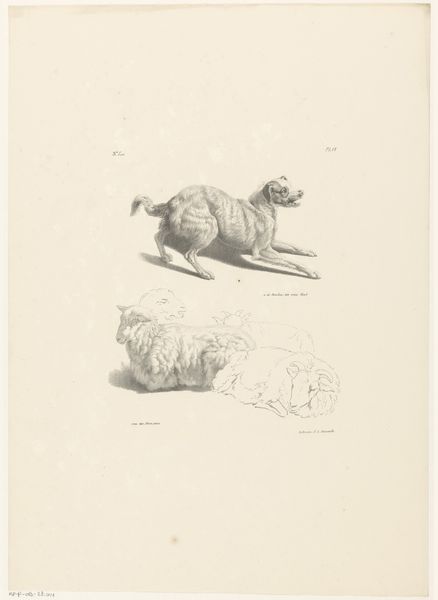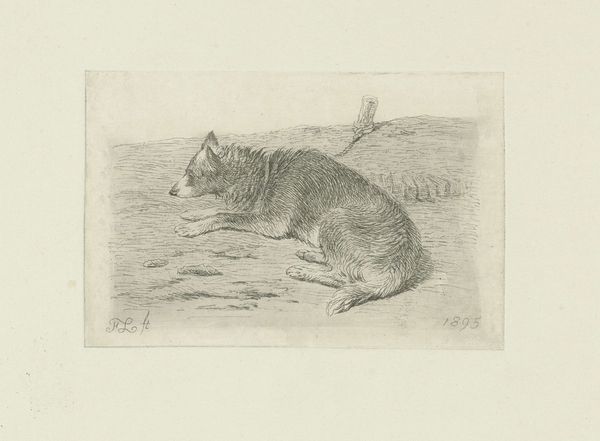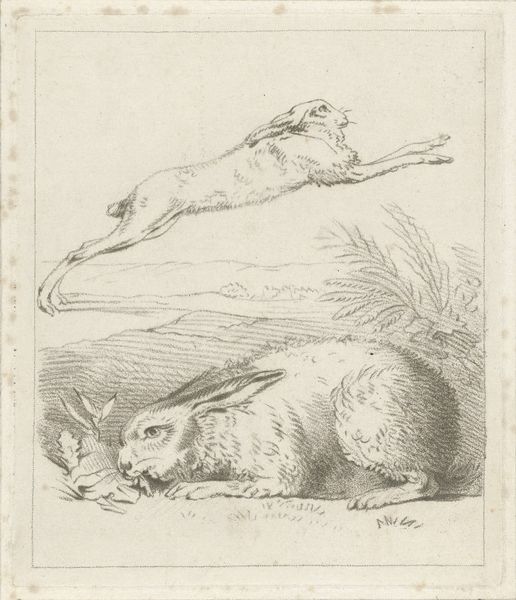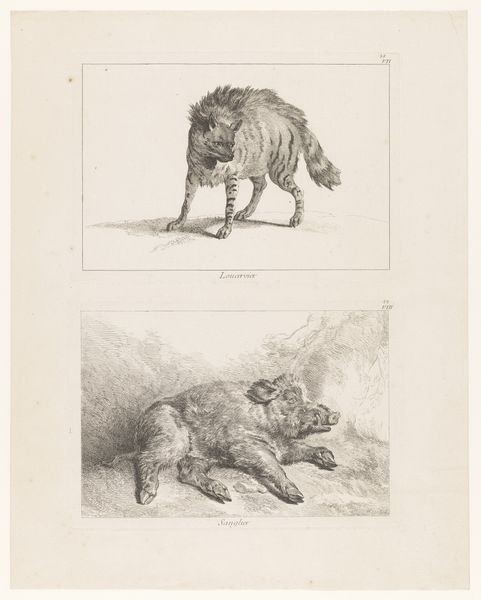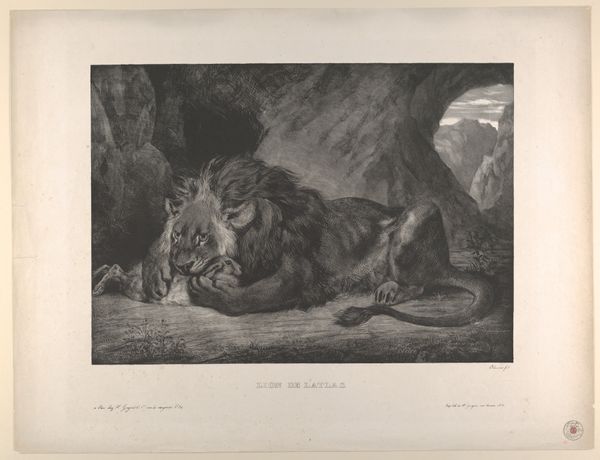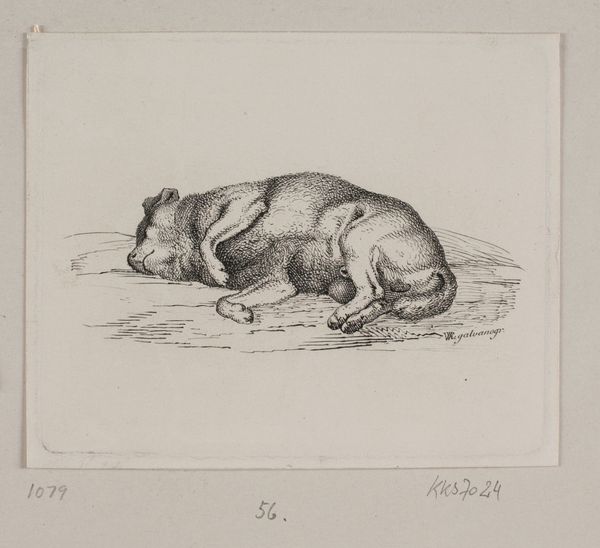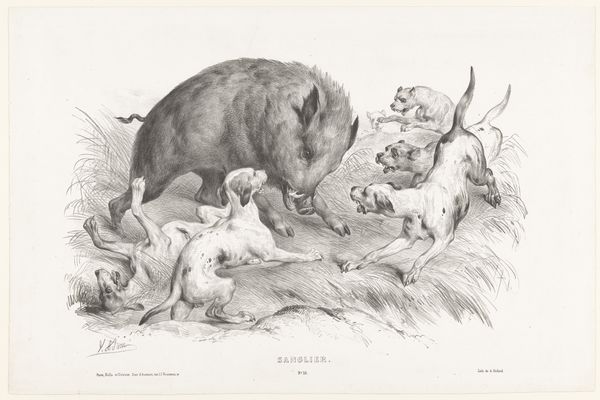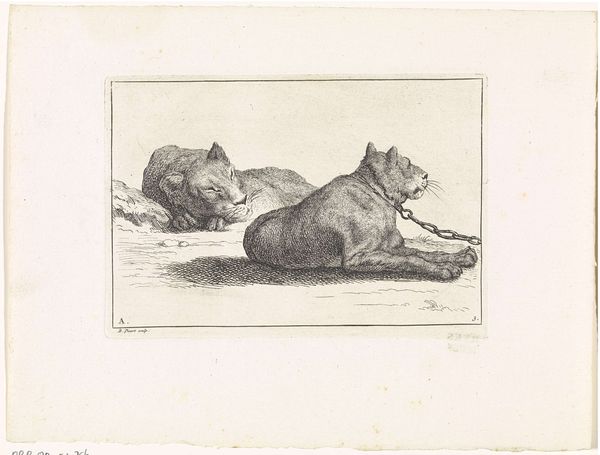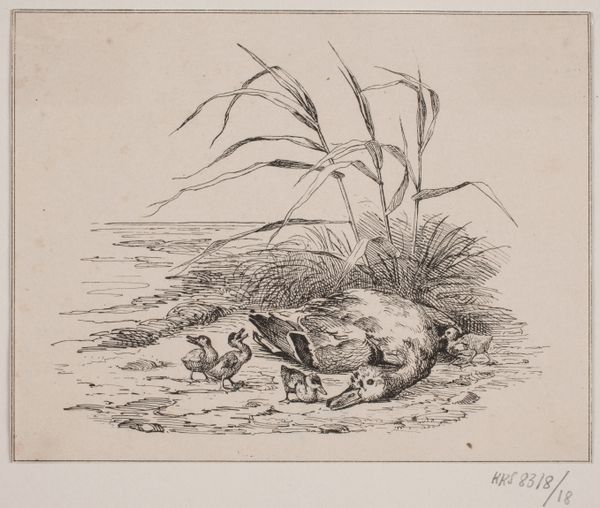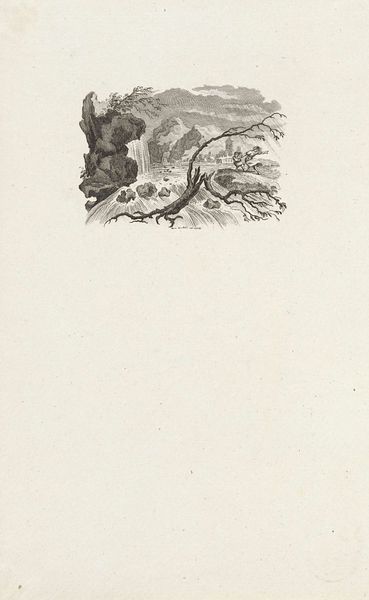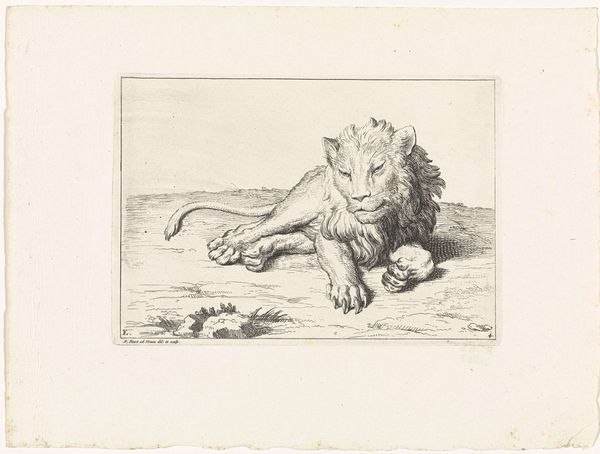
drawing, pencil, graphite
#
drawing
#
animal
#
landscape
#
figuration
#
pencil drawing
#
romanticism
#
pencil
#
graphite
Dimensions: height 317 mm, width 488 mm
Copyright: Rijks Museum: Open Domain
Editor: This is Victor Adam's "Koninklijke Tijger" or "Royal Tiger" from 1843-1844. It's a pencil and graphite drawing. There's a tension in the tiger’s pose – crouched, alert, yet on what looks like a soft cloud. What's your interpretation? Curator: Notice how Adam depicts the tiger emerging, almost leaping, from the rock? The tiger, a symbol of raw power and untamed nature, is juxtaposed with the Romantic era's fascination with both the sublime and the picturesque. The almost dream-like rock formation might reflect humanity's distancing from, yet enduring captivation with, the wild. What emotions does the image evoke in you? Editor: Definitely a sense of awe, but also maybe a bit of fear. I guess it feels a little posed. The tiger almost looks as if it were aware it was being sketched. Curator: Indeed! Consider how European audiences perceived such exotic creatures. Tigers often represented the 'Orient,' embodying the exotic and dangerous Other. This rendering isn't simply a zoological study; it embodies a cultural dialogue. Are you familiar with the traditional symbolism connected to Tigers in art and visual culture? Editor: Not really... Aside from maybe power and aggression, I wouldn’t be sure what they symbolized. Curator: Right! These symbols aren't static. The tiger in Romanticism, especially for a European audience, connects with power but is colored with ideas of imperialism and how untamed lands are perceived by settlers. Does this alter how you interpret the artwork? Editor: It does. It’s not just a beautiful drawing, but also reveals certain cultural ideas about both nature and other places, and other cultures, at that time. I hadn't considered all the layers within what seemed like a simple sketch. Curator: Exactly. Recognizing these embedded layers enriches our understanding and unveils the potent dialogues images facilitate across eras.
Comments
No comments
Be the first to comment and join the conversation on the ultimate creative platform.
